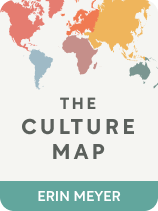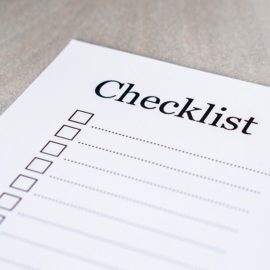

This article is an excerpt from the Shortform book guide to "The Culture Map" by Erin Meyer. Shortform has the world's best summaries and analyses of books you should be reading.
Like this article? Sign up for a free trial here .
Are you looking for The Culture Map discussion questions? What are some of the key themes and ideas to discuss?
In The Culture Map, Erin Meyer presents a framework for analyzing cultural differences on eight dimensions. By understanding both your own and another culture’s position on each dimension, you can relate to each other better so that you can accomplish your business goals.
Here are some discussion questions and exercises that will help you consider the book’s lessons in the context of your own life.
The Culture Map: Breaking Through the Invisible Boundaries of Global Business
In an increasingly globalized world, understanding other cultures is an essential business skill. In The Culture Map, Erin Meyer presents eight axes you can use as a framework to analyze these differences: Communication, Feedback, Thinking, Leadership, Decision-Making, Trust, Disagreement, and Time Perception.
Meyer positions countries on each axis, each of which represents a range of possible behavior between two extremes. Each country’s position represents the midpoint of acceptable behaviors in that country, which Meyer contends is enough to account for both individual and regional differences within a country. (Shortform note: Meyer bases these positions on anecdotes and personal experience. Her lack of outside research may be due to the difficulty of empirically measuring cultural differences: Cultural factors would influence any study methodology, so the study would be flawed.)
Here are some The Culture Map discussion questions to help you put the book’s lessons into perspective.
Understand Your Cultural Baseline
How aware are you of cultural differences?
- Pinpoint a specific problem you have (or have had in the past) when working with someone from another culture. Describe one situation in detail.
- What frustrates you about this situation? (Did the other person behave in a way you didn’t understand? Did they disagree with you or fail to communicate important information?)
- Why do you think the other person behaved this way? (If you’re frustrated that your co-worker keeps CC-ing your boss on all your emails, you might write, “I think she’s doing this because she thinks I’m incompetent.”)
- Based on this situation, what axis do you think is going to be most applicable to your work life, and why?
Provide Better Feedback
Now that we’ve learned about cultural differences in both communication and feedback, let’s apply what we’ve learned to our own lives.
- Describe a situation where you provided feedback to someone from a different culture. How does this person’s culture assess and communicate? How does yours?
- Briefly describe the type of feedback and how you delivered it. Did you deliver it in person or by email? Was it negative or positive?
- How do you think the other person interpreted your comments?
- Was this interpretation the one you intended? If not, describe one strategy you can use in the future to avoid this misunderstanding.
Improve Your Business Relationships
You now know how people trust differently in different cultures. Use this knowledge to improve your own business practices.
- Think about a specific intercultural business relationship that’s important to you. How does this person’s culture build trust? How does your culture build trust?
- Describe a strategy you’ve used to build trust with this person.
- Reflect on why it might have been effective or ineffective. Was it a cognitive or personal behavior?
- Name another strategy you’d like to use to improve your relationship with this person. Why do you think it will work?
Understanding Our Own Cultural Biases
You’ve learned a lot about what caused the problems in the situation you described at the beginning of the guide. Return to that situation and see if you view it from a new perspective.
- Review the situation you described in the beginning of the book. What axis did the cultural difference end up lying on? (There may be more than one.) The eight axes are Communication, Feedback, Thinking, Leadership, Decision-Making, Trust, Disagreement, and Time Perception.
- Is this the axis you expected the difference to lie on? Why or why not?
- What were the cultural expectations that colored your view of the situation? How, specifically, did it differ from the other person’s?
- Name three specific techniques you can use to improve your current situation. If you named a past situation, name three specific techniques you can use to avoid similar situations in the future. For example can you be open about your own cultural biases so they understand you’re not intentionally trying to offend?

———End of Preview———
Like what you just read? Read the rest of the world's best book summary and analysis of Erin Meyer's "The Culture Map" at Shortform .
Here's what you'll find in our full The Culture Map summary :
- The eight axes you can use as a framework to analyze cultural differences
- How to better relate to those of another culture to accomplish business goals
- How the Vikings have more gender equality than we see today







I find your comment, “Meyer bases these positions on anecdotes and personal experience” is false. She has and continues research on these scales to refine and build out as research continues on more countries and refreshes on existing countries. If you did your research you would know her work and research for this book is built off of decades of research from Geert & Gert Jan Hofstede, Michael Minkov, Peter Pedersen, and others but her aim is specific to the workplace. Her use of personal experiences and anecdotes is to help the average business person to relate to situations they experienced working internationally.